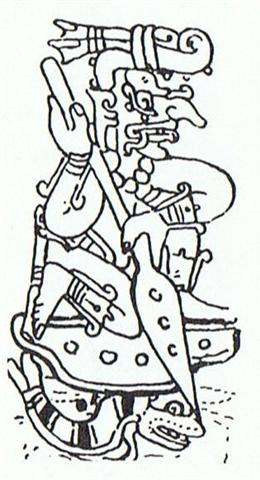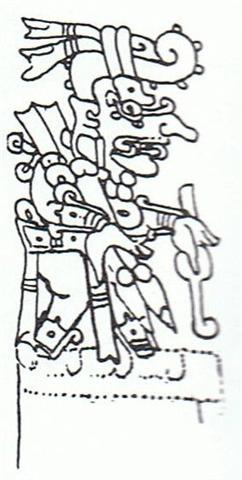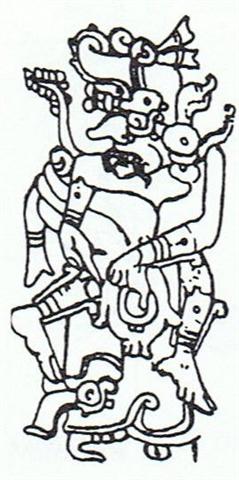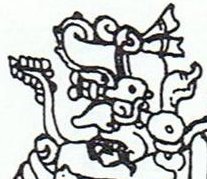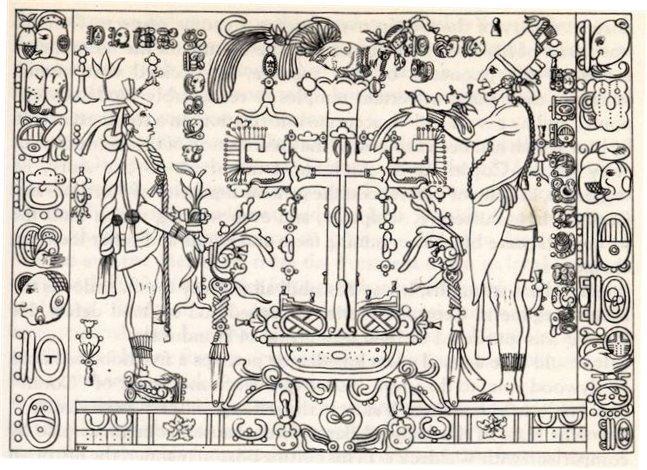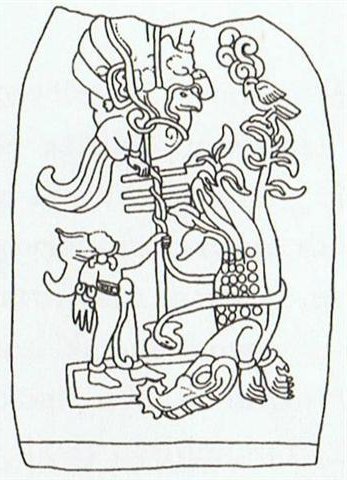1. The rectangular outline of henua ('earth' according to Metoro) has been used in a remarkable sequence of pictures of the 'Rain God' (a term used by Kelley in his Deciphering the Maya Script):
These 3 figures are the beginning of the sequence (and I have reversed the pictures to see them properly, i.e. with the front side at right instead of according to the Maya convention with the front side at left). In the first we can see the Rain God (i.e. Sun) paddling a canoe, in the second he is in midair, and in the third picture he has come down from the regions above and is walking on the ground. In front he has a kind of stick. The earth on which he walks is horizontal and the stick is vertical, i.e. signs of female respectively male. This (and what follows later) is my own interpretation and owns nothing to Kelley. Possibly the 3rd Rain God figure corresponds to kiore + henua, as for instance in the 1st of 24 such glyphs in a long sequence in the E text:
These 24 glyphs have no inverted maro strings added, no signs of 'feathers growing'. Such inverted maro signs ought to indicate 'beginning' instead of 'end':
Ga3-5 (the 1st of 31 such glyphs in a long sequence) should therefore indicate the beginning of the season of growth. Light has arrived and thus life is growing. 75 maybe indicates a quarter of the 300 days of Sun, or that 'night' (7) is changing into 'day' (5). 3 * 5 = 15 and 75 = 5 * 15 = 3 * 25 = ¼ of 12 * 25 = 300. If 5 represents the fire in the sky, then 3 ought to represent the earth below. In the following we are going to hear about 'the planter' who worked the ground of Easter Island in order to enable her to bear good growth. But before we return to the events after the kuhane had returned to Hau Maka, we should complete the Rain God sequence. Beyond 'the planter' (the 3rd figure) comes a peculiar 'tree':
The end of the first part of the sequence is indicated by a reversal, the Rain God up in the 'tree' is looking back. By climbing the tree the Rain God has reached summer solstice, we can conclude. At the root of the tree even the face of the 'monster' is looking back. Evidently there are 8 + 6 = 14 periods in the past when the Rain God has reached midsummer. In front of his face there are 8 'balls of fire' to the left and below the 'path', followed by 6 above and at right.
The details suggest 6 + 2 + 4 + 1 = 13 followed by a 14th black one. The monster at the root of the tree is also depicted in the Temple of the Cross, and here it is looking straight ahead at us:
Sometimes the monster at the root is depicted like a crocodile:
Picture from David Freidel, Linda Schele, Joy Parker: Maya Cosmos. Three Thousand Years on the Shaman's Path. |
